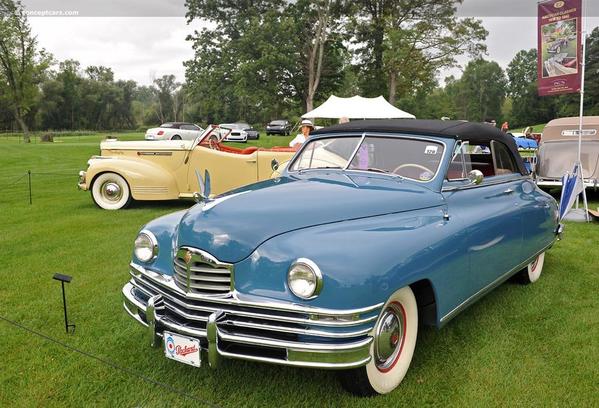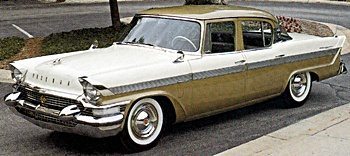Hudson's Department Store, Like Macy's in New York, and Marshall Field's in Chicago were the places to go for Lionel, American Flyer, and all things model trains in the postwar era. The display layouts at Hudson's in downtown Detroit were dream factories like none other for the young baby boomers who could only pine for having such a layout of their own. I remember taking the trolley with my mother to the downtown Hudson's store at Christmas to "virtually shop" for my dream Lionel locomotives, freight cars, and operating accessories. And, of course, there followed the exciting visit to see Santa Claus at the very same Hudson's, to confess to him about all of the Lionel items that I now hoped he would bring at Christmas: the GG-I locomotive, the pickle car, the icing station, and the operating Bosco car, etc.
These cherished memories were made possible by the proprietor of the department store, Joseph L. Hudson. But little did I know until recently, that the Hudson Motor Car was a product of that same Joseph L. Hudson, with the Hudson Motor Car Company being formed by Hudson and a group of investors in 1909. (Interestingly, on September 16, 1908, Buick Motor Company head Billy Durant incorporated General Motors.) Additionally, I always thought that the "modern car" was created by Ford Motor Company, with the introduction of the 1949 Ford. Compare the '49 Ford to the '49 GM Chevy, Pontiac, and Cadillac. The '49 Ford is much longer and much lower, and, I thought that this sales leader was the precursor of the modern vehicle. The driver and the passengers no longer sat fully upright, and now had their legs more fully extended. But, I was wrong. It was actually the 1948 Hudson Motor Car Co., that introduced the modern car. As noted in Wikipedia:
"In 1948, the company launched their "step-down" bodies, which lasted through the 1954 model year. The term step-down referred to Hudson's placement of the passenger compartment down inside the perimeter of the frame; riders stepped down into a floor that was surrounded by the perimeter of the car's frame. The result was not only a safer car, and greater passenger comfort as well, but, through a lower center of gravity, good-handling car. In time almost all U.S. automakers would embrace it as a means of building bodies. Automotive author Richard Langworthdescribed the step-down models as the greatest autos of the era in articles for Consumer Guide and Collectible Automobile."
Also in 1948, the steam to diesel transition was in full swing, with EMD's innovative locomotive design taking the railroad industry by storm. Similarly, in the automotive world, the innovative "step-down" design of the 1948 Hudson was taking the automotive industry by storm. GM was obviously caught napping -- or, was stubbornly resistant to the new design paradigm. Compare the 1949 - 1952 Chevy, Pontiac, and Cadillac to the 1948 Hudson, or, even the 1949 Ford.
So, if you are modeling the steam to diesel transition era, you may wish to add one or more 1948 era Hudsons, 1949 Fords, 1949 Plymouths 1949 Chevys, 1949 Cadillacs, etc., to your layout. Perhaps you could put a Hudson, a Ford, a Chevy, and a Plymouth on your Postwar Lionel auto loader, or, flat cars.
Alternatively, if you or your family enjoy more playful items on your layout, Disney has fully embraced the innovative design of the "modern" Hudson in their hit movie, "Cars", and it's sequels. A stylized Hudson auto is a main character in the movie "Cars" - "Doc"!
Change was obviously in the air in the late 1940's and the 1950's in the railroad industry, and, in the automotive industry. Your layout can either prototypically, or, playfully, re-create that transition with your choice of motive power, consist and vehicles.
My O gauge layout features a 1949 Ford, a 1950 Plymouth, and a 1950 Chevy. I plan to add a few of the stylized Disney Hudson vehicles to the children's layout, since the boys are big fans of Disney's "Cars", and have watched the movie on DVD repeatedly.
Do you have any of the 1948 to 1953 "transition" era vehicles on your layout?







